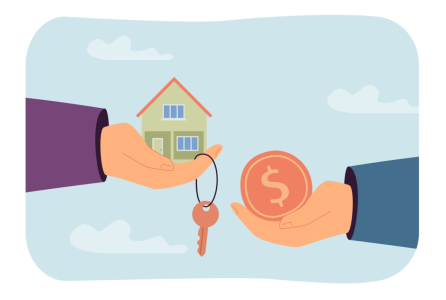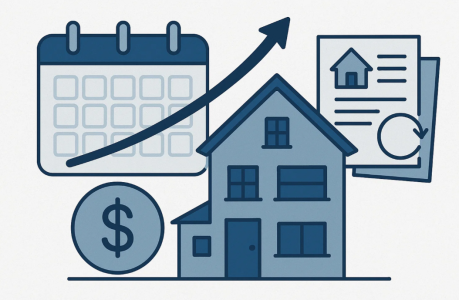Interest rates are falling—here’s why smart borrowers won’t lower their repayments
Noel Whittaker is the author of Wills, Death & Taxes Made Simple and numerous other books on personal finance. Email: [email protected]
The Reserve Bank left interest rates on hold at its latest meeting, but gave a strong hint that at least one more rate cut is likely this year. That raises a big question for anyone with a mortgage: what should you do next?
When rates fall, lenders usually offer to reduce your repayments. But if you've been coping comfortably so far, why cut back? It makes more sense to keep paying the higher amount. Most people manage their finances by living on what’s left after their bills are paid, so treat your mortgage the same way.
The more you repay, the quicker you’ll build wealth and the sooner you'll be out of debt. It’s a simple strategy that can save you a fortune over time. Just by maintaining your current repayment level when rates fall, you can slash years off your loan term and save thousands in interest.
You won’t miss the money, because you’re already used to living without it.

Stick with the higher payment when rates drop—you won’t feel the pinch now, but you’ll feel the freedom when the mortgage is gone years early. Source: pch.vector / Freepik
Case study: Jack and Jill took out a $600,000 loan two years ago, with monthly repayments of $3,800 over 30 years at a variable rate of 6.5%.
With a 0.50% rate cut already in place and another 0.25% almost certain, they could soon be paying 5.75%. That would reduce their repayments to $3,501 a month. If they took that option, the loan would run its full 30-year course, and they would pay $660,000 in interest.
But if they stick with their current $3,800 repayments, they’ll knock five years off the loan and save over $160,000 in interest.
And there's even more they can do. Cast your mind back to 1987, when I made national headlines talking about fortnightly mortgage repayments instead of monthly. The banks all scoffed at it, but by paying fortnightly, you pay off your loan faster without even noticing the difference.
Let's go back to the case study above. If Jack and Jill changed their payments to $1,900 a fortnight, they would be paying back $49,400 a year instead of $45,600 a year. The term would drop to just over 20 years.
That’s because there are 26 fortnights a year: it’s like paying an extra month, painlessly. Combining both the above strategies would save them a quarter of a million dollars in interest and see them mortgage-free a full 10 years early.

Switch to fortnightly repayments and knock years off your loan—without feeling the difference. Source: Seniors Discount Club
Refinancing to a lower interest rate is another powerful way to reduce interest costs. But many borrowers are trapped by the lender’s mortgage insurance—a one-off premium that protects the lender against default by the borrower, and cannot be transferred between lenders. This often makes refinancing too expensive to consider.
However, with the recent sharp rises in property values, there may now be a way out.
Mortgage insurance is typically only required when your equity is under 20%. If your property has risen in value, you may now own more than 20% of it, which should give you the ability to refinance without incurring another round of mortgage insurance.
If you’re in that situation, ask a local agent for a free appraisal to estimate your home’s current market value. If your loan is now less than 80% of that value, don’t call your bank–speak to an experienced mortgage broker instead.
A good broker will know which lenders are likely to offer better rates, and whether you qualify to refinance without needing additional mortgage insurance.
What about people who want to buy a home but have been put off by the high cost of mortgage insurance, which can exceed $20,000 for an average first-home buyer? It’s a question of strategy, and thinking about what other resources may be available to you.
If house prices keep rising–and most indications suggest they will–then every month of delay makes the property more expensive.
In that case, it may make more sense to buy now and wear the insurance premium, rather than keep saving and risk being priced out entirely. It’s a gamble either way, but in many cases the numbers favour acting sooner rather than later.
Of course, if the Bank of Mum and Dad is available to you, it may be possible to avoid mortgage insurance altogether. A financial gift or loan from parents to top up the deposit could be enough to drop your loan-to-value ratio under 80%, sidestepping that $20,000 expense, and starting your homeownership journey on a stronger footing.
The bottom line? Whether you already own a home or are hoping to buy one, interest rate movements create both risk and opportunity. A little smart thinking now can mean major savings down the track.
About the author: Noel Whittaker, AM, is the author of Wills, death & taxes made simple and numerous other books on personal finance. An international bestselling author, finance and investment expert, radio broadcaster, newspaper columnist and public speaker, Noel Whittaker is one of the world’s foremost authorities on personal finance. Connect via Twitter or email ([email protected]). You can shop his personal finance books here.
Advice given in this article is general in nature and is not intended to influence readers’ decisions about investing or financial products. Always seek professional advice that takes into account your personal circumstances before making any financial decisions. The views expressed in this publication are those of the author.







